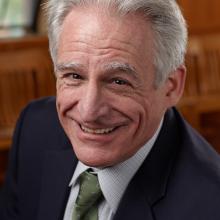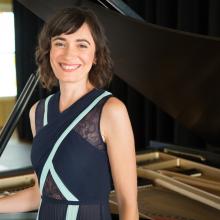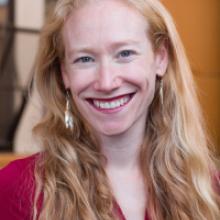Faculty pianists Craig Sheppard and Cristina Valdés, faculty percussionist Bonnie Whiting, and Seattle principal timpanist James Benoit perform Béla Bartók's exhilarating and popular Sonata for Two Pianos and Percussion, Sz. 110, BB 115. Also on the program: Mozart's Sonata for Two Pianos in D Major, K. 448 and Brahms' Waltzes, Op. 39.
Masks are recommended in all indoor spaces. Proof of vaccination remains a requirement for everyone 12 and over at Meany Hall and all ArtsUW Ticket Office events, including Meany Center, DXARTS, Dance Department, School of Drama, and School of Music. Individuals unable to be fully vaccinated, including people with a medical or religious exemption, must have proof of a negative provider-administered COVID-19 test (taken within 72 hours of the performance). UW staff will check for proof of vaccination and negative COVID tests at the doors as a condition of entry. Proof of negative test result must come from a test provider, a laboratory or a health care provider. Home or self-administered tests will not be accepted. Details of these policies and procedures are at: https://artsevents.washington.edu/covid-protocols
Program
Wolfgang Amadeus Mozart: Sonata for Two Pianos in D Major, K. 448
Johannes Brahms: Waltzes Op. 39, for Piano-Four Hands
Intermission
Béla Bartók: Sonata for Two Pianos and Percussion, Sz. 110, BB 115
Program Notes
The Sonata for Two Pianos in D, K.448, dedicated to his pupil Josepha Auernhammer, was one of the first works that Mozart composed upon his arrival in Vienna in 1781, at the beginning of his final decade in the city where he would remain for the rest of his short life, a decade that gave birth to the enormous number of great works that we cherish today. In addition to a voluminous correspondence with his father and friends, the sheer amount and variety of works that Mozart composed in 1781 (amongst which, six violin sonatas, variations for piano and violin, a Serenade for Winds) is staggering, given the move from his native Salzburg and the need to establish himself in a completely new environment.
Mozart composed relatively little in the two-piano idiom, the obvious precedent being the Concerto for Two Pianos in E flat, K.365, written two years previously in Salzburg, where he would have performed it with his sister, Nannerl. The form of the current work is ‘textbook’. The first movement is in simple sonata form, the second movement is in ABA song form, and the third movement is a lively rondo. The general mood, as with so much of Mozart’s music, is bright and cheerful.
Brahms composed the Sixteen Waltzes, Opus 39, in 1865 when he was still living in Hamburg. However, the fact that they were dedicated to the well-known conservative Viennese music critic, Edward Hanslick, attests to his early ties to that city, as Brahms had already been appointed conductor of the Wiener Singakademie in 1963 (he would eventually make Vienna his permanent home in 1872). Although the waltz form was extremely popular in Vienna, influences in Opus 39 point as well to the north German choral tradition that played such a big role in Brahms’s early development, in particular numbers 5, 12 and the well-known ‘lullaby’ of number 15. Brahms subsequently rewrote Opus 39 for two hands, changing the key signatures in a few instances.
Bartók’s Sonata for Two Pianos and Percussion was composed in 1937 and premiered in Basel, Switzerland, on January 16, 1938 with the composer and his his wife, Ditta Pázstory-Bartók, performing the two piano parts (its success was such that it was reworked 1940 as a concerto for two pianos and orchestra). A groundbreaking work in its unusual combination of instruments, it caused a sensation in the classical music world that influenced later works in a similar genre by Berio, Crumb and Boulez. In it, the percussion instruments are often given instructions to achieve sounds hitherto unknown. The first movement, with a slow introduction and a richly developed, highly idiosyncratic sonata form, is unusual in that it takes up nearly half the duration of the piece. The element of the tritone, the intervallus diavolus (devil’s interval!) is prominent throughout, the opening F# rumbling in the timpani resolved in the key of C in the final chords of the first movement. One hears many variations on the Dies Irae as well. Often, the rhythmic interaction of the pianos with the percussion, let alone the interaction between the two pianos, is both tricky and exhilarating. The second movement provides an idyllic respite from the tumultuous nature of the first. It is based on Bartok’s interest in the sounds of nature, similar to that evinced previously in The Night’s Music from his Out of Doors Suite (1926) and the inner movements of his first two piano concerti (1926 and 1931). The third movement starts out bright and brisk in the key of C, with the xylophone giving the main theme. A few moments later, a second theme reintroduces turmoil. Later in the movement, this turmoil approaches chaos for all four players – aggressive and even violent. But peace eventually returns. In the final bars, the two pianos play two simple chords, one an altered dominant seventh, the other in the tonic of C, and the snare drum fades off into the distance. There’s even an irony as if, after all the discord, all we are left with is that one final C Major chord!
My own connection to this work is a personal one. Sir Georg Solti turned pages for Ditta Pázstory-Bartók at the world première in Basel in 1938. In 1987, I performed the sonata with Sir Georg, the percussionist Evelyn Glennie (at the start of her meteoric career) and the tympanist of the Philharmonia Orchestra, David Corkhill, at the Sheldonian Theatre in Oxford (UK) and Schwetzingen Castle in Germany. Those two performances still resonate within me, and I’m delighted to be playing the sonata again this evening with my younger colleagues.
—Craig Sheppard, copyright 2022
Artist Bios
James Benoit, a native of Niskayuna, New York, is the Principal Timpanist of the Seattle Symphony. Previously, Benoit was the Associate Principal Percussionist and Assistant Principal Timpanist with the Fort Worth Symphony Orchestra, and spent three seasons as a section percussionist with the Sarasota Opera.
As an educator, Benoit was on faculty at the University of Pittsburgh and at the Luzerne Music Center. An avid supporter of music in the classroom, he also has worked as a teaching and performing artist with Associate Solo Artists, a non-profit organization that provides artistic interdisciplinary programs to children, teachers, businesses, and social establishments, by giving concerts, masterclasses, and workshops in schools throughout New York.
Benoit received his Artist Diploma from Duquesne University, his Master of Music degree from The Juilliard School and his Bachelor of Music degree from the Berklee College of Music.

Craig Sheppard is Professor of Piano at the School of Music of the University of Washington in Seattle. He is also Professor of the Advanced Innovation Center at the China Conservatory in Beijing, and his former students hold positions in conservatories and universities throughout the world.
A veteran of over fifty years on the international stage, in the past few seasons he has performed both Shostakovich’s 24 Preludes and Fugues and Bach’s The Art of Fugue in venues throughout the United States, as well as London, Manchester (UK), Jerusalem, Shanghai and Beijing’s Forbidden City Concert Hall, in addition to giving masterclasses at all of the above.
As recording artist, his LPs and CDs have appeared on the Sony, Chandos, Philips, EMI and AT-Berlin labels. He has published 26 CDs with Romeo Records (NY) since 2005, including the complete Beethoven sonatas (Beethoven: A Journey), the Six Bach Partitas, the Inventions and Sinfornias, both books of The Well Tempered Clavier, the last three Schubert sonatas, Liszt’s Années de Pèlerinage I and II, Debussy’s 24 Preludes and 12 Études (including both books of Images and Estampes), the 24 Preludes and Fugues of Shostakovich, Late Piano Works, Opus 116-19, of Johannes Brahms, and Bach’s Die Kunst der Fuge (The Art of Fugue).
Within the past two decades, he has traveled many times to the Far East for performances and masterclasses, including Japan, Korea, China, Hong Kong, and Singapore. He has performed at the Nehru Memorial Library in New Delhi, held a residency at the Melba Conservatory in Melbourne, Australia, and performed three times in New Zealand, including the first ever public performances of both books of Bach’s Well Tempered Clavier. Most recently, he performed the Complete Chopin Nocturnes at the Museu do Oriente in Lisbon.
Born in Philadelphia in November, 1947, Craig Sheppard graduated from both the Curtis Institute and the Juilliard School, studying with Eleanor Sokoloff and Sasha Gorodnitzki respectively. He also worked with Rudolf Serkin and Pablo Casals at the Marlboro Festival, and later with Ilona Kabos, Peter Feuchtwanger and Sir Clifford Curzon in London. During his early years, in addition to a successful début at New York’s Metropolitan Museum of Art, he won top prizes in the Busoni, Ciani, and Rubinstein competitions. However, it was his Silver Medal at the Leeds International Piano Competition in 1972 that brought him to international attention. Moving to London in 1973 and living there for the next twenty years, Sheppard taught at Lancaster University, the Yehudi Menuhin School, and the Guildhall School of Music and Drama. He also performed on multiple occasions with all the major British orchestras and with many on the European continent, under such conductors as Sir George Solti, Erich Leinsdorf, Kurt Sanderling, James Levine, Michael Tilson Thomas, Aaron Copland, Lord Yehudi Menuhin, Sir Charles Mackerras, Sir Andrew Davis, Sir John Pritchard, Esa-Pekka Salonen, David Zinman, and Leonard Slatkin. In the United States, he has performed with the orchestras of Philadelphia, Boston, Chicago, Atlanta, Dallas, San Francisco, Rochester and Seattle, and many others.
Craig Sheppard’s solo repertoire is eclectic, comprising nearly fifty solo recital programs and more than sixty concerti covering a wide spectrum within the Western canon. He also has a great love of chamber music and has collaborated with many great instrumentalists and singers, including Wynton Marsalis, José Carreras, Victoria de los Angeles, Irina Arkhipova, Ida Handel, Sylvia Rosenberg, Mayumi Fujikawa, the Cleveland, Emerson and Miró string quartets, and many musicians of the younger generation, including James Ehnes, Stefan Jackiw, Richard O’Neill, Edward Arron and Johannes Moser.
Sheppard is invited frequently to serve on the juries of distinguished international competitions, including most recently the Arthur Rubinstein International Piano Master Competition in Tel Aviv in May of 2021 and the National Society of Arts and Letters in Chicago in 2022. He also returns regularly to the Jerusalem Music Center to perform and teach, as well as the Chetham’s Summer School in Manchester, UK. With colleague Dr. Robin McCabe, Sheppard is Co-Founder and Artistic Director of the Seattle Piano Institute, a boot camp for aspiring young pianists held every July at the University of Washington, this summer celebrating its 14th anniversary.
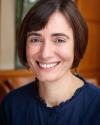
Recently hailed by Fanfare Magazine as “excellent” and “clearly sensitive,” Cuban-American pianist Cristina Valdés is known for presenting innovative concerts with repertoire spanning over 300 years. A fierce advocate for new music, she has premiered countless works, including many written for her. She has performed across four continents and in venues such as Lincoln Center, Benaroya Hall, Carnegie Recital Hall, Le Poisson Rouge, Roulette, Miller Theatre, Jordan Hall, and the Kennedy Center. Ms. Valdés has appeared both as a soloist and chamber musician at festivals worldwide including New Music in Miami, the Foro Internacional de Música Nueva in Mexico City, Brisbane Arts Festival, the Festival of Contemporary Music in El Salvador, Havana Contemporary Music Festival, and the Singapore Arts Festival.
An avid chamber musician and collaborator, Ms. Valdés has toured extensively with the Bang On a Can “All Stars”, and has performed with the Seattle Chamber Players, the Mabou Mines Theater Company, the Parsons Dance Company, and Antares. Her performances on both the Seattle Symphony’s Chamber Series and [UNTITLED] concerts have garnered critical acclaim, including her “knockout” (Seattle Times) performance of Bartok’s Sonata for Two Pianos and Percussion, and her “arrestingly eloquent performance” of Dutilleux’s Trois Preludes (Bernard Jacobson/MusicWeb International).
Ms. Valdés has appeared as concerto soloist with the Seattle Symphony, Seattle Philharmonic, the Lake Union Civic Orchestra, Johns Hopkins Symphony Orchestra, the Binghamton Philharmonic, NOCCO, Philharmonia Northwest, the Eastman BroadBand, and the Stony Brook Symphony Orchestra, amongst others. In 2015 she performed the piano solo part of the Ives 4th Symphony with the Seattle Symphony under the direction of Ludovic Morlot, which was later released on CD to critical acclaim and made Gramophone’s list of Top 10 Ives Recordings. Other recent recordings include Orlando Garcia’s From Darkness to Luminosity with the Málaga Philharmonic on the Toccata Classics label, and the world premiere recording of Kotoka Suzuki’s Shimmer, Tree | In Memoriam Jonathan Harvey. She can also be heard on the Albany, Newport Classics, Urtext, and Ideologic Organ labels.
In recent seasons she gave performances of Beethoven’s Piano Concerto No. 3, Bartok’s Piano Concerto No. 3, the world-premiere performance of Carlos Sanchez-Guttierez’s Short Stories for piano and string orchestra with the Orquesta de Cámara de Bellas Artes in Mexico City, and the US Premiere of Under Construction for solo piano and tape playback by Heiner Goebbels at Benaroya Hall. Last season included a wide variety of performances including Gershwin’s Rhapsody in Blue, the premiere of her own composition Sketches of an Anniversary Prelude for trumpet and piano, and the premiere of composer Jeremy Jolley’s (contro-)clessidra IV for piano and electronics written especially for her.
Since 2006 she has made her home in Seattle where she has been an integral part of the new music scene. Ms. Valdés founded the SLAM Festival, a new music festival dedicated to the music of Latin-American composers, and is a core member of the Seattle Modern Orchestra - the only large chamber orchestra in the Pacific Northwest solely dedicated to the music of the 20th and 21st centuries. With the Seattle Modern Orchestra, she has premiered works by Anahita Abbasi, Darius Jones, Wang Lu, Kaley Eaton, Jeremy Jolley, and Yigit Kolat, amongst others.
Ms. Valdés received a Bachelor of Music from the New England Conservatory of Music, and a Master of Music and Doctor of Musical Arts from SUNY Stony Brook. While at Stony Brook, she was a recipient of the Thayer Minority Fellowship, a member of the Stony Brook Graduate Piano Trio, and a winner of the Concerto Competition. She is currently an artist-in-residence at the University of Washington, where she teaches piano and is the director of the UW Modern Music Ensemble.
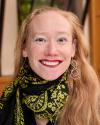
Bonnie Whiting (she/her) performs, commissions, and composes new experimental music for percussion. She seeks out projects involving the speaking percussionist, non-traditional notation, improvisation, and interdisciplinary performance. Her debut album, featuring an original solo-simultaneous realization of John Cage's 45' for a speaker and 27'10.554” for a percussionist, was released by Mode Records in April 2017. Her sophomore album Perishable Structures, launched by New Focus Recordings in 2020, places the speaking percussionist in the context of storytelling and features her own music as well as works by Vinko Globokar, Frederic Rzewski, Richard Logan-Greene, and Susan Parenti.
Her recent season highlights include onstage work in the multimedia chamber opera The Ritual of Breath Is the Rite to Resist, featuring productions at Lincoln Center’s Summer for the City, at The Hopkins Center at Dartmouth College, and at Stanford Live; a reprise of composer Wang Lu’s Stages for solo speaking/singing percussionist at New York’s Performance Spaces for the 21st Century (PS21); and four performances of a new concerto written for her by Jonathan Bingham with the National Symphony Orchestra for the family pops series at the Kennedy Center alongside renowned children’s book author Mo Willems. Whiting also creates original, improvised music with clarinetist James Falzone and pianist Lisa Cay Miller; their first album was released on Allos Documents in 2024, and the trio performs this season in Seattle, Vancouver, and Portland.
In 2022 she premiered Through the Eyes(s): an extractable cycle of nine pieces for speaking/singing percussionist collaboratively developed with composer Eliza Brown and ten artists and writers incarcerated at the Indiana Women’s Prison. The project was featured on NPR’s nationally-syndicated Slingshot, and locally via Seattle’s ClassicalKING radio station. Whiting has an ongoing relationship as a soloist with the National Orchestra of Turkmenistan via the U.S. Embassy Cultural Affairs Office, playing concerti in Ashgabat in 2017 and 2018. She performs frequently with percussionist Jennifer Torrence, giving concerts of new experimental work for speaking percussionists throughout Norway and the US. Her collaboration with multimedia artist Afroditi Psarra generated the album <null_abc>, released on the Zero Moon label in 2018, and their project with designer Audrey Desjardins on transcoding data from IoT devices as performance received a 2019/20 Mellon Creative Fellowship. The project was explored in a workshop at the 2020 Transmediale Festival in Berlin, and currently lives as an interactive net art installation. She spent four years performing music for voice and percussion with the Harry Partch Ensemble on the composer’s original instrumentarium while the instruments were in residence at the UW. Whiting has presented solo and small ensemble shows at The Stone in New York, the Brackish Series in Brooklyn, The Lilypad in Boston, The New York City Electroacoustic Music Festival, at Hallwalls in Buffalo, the Tiny Park Gallery in Austin, The Wulf in LA, the Carl Solway Gallery in Cincinnati, The Grove Haus in Indianapolis, on the Wayward Music Series in Seattle, on tour throughout New Zealand, and at colleges and universities around the country.
Whiting is the Co-Artistic Director and core percussionist of the Seattle Modern Orchestra, the Pacific Northwest’s only large ensemble solely dedicated to music of the 20th and 21st Centuries, and she plays vibraphone with the Torch Quartet. As a chamber musician, she has collaborated with many of today's leading new music groups, including red fish blue fish percussion group, (George Crumb's Winds of Destiny directed by Peter Sellars and featuring soprano Dawn Upshaw for the Ojai Festival), eighth blackbird (the “Tune-in” festival at the Park Avenue Armory), the International Contemporary Ensemble (on-stage featured percussionist/mover in Andriessen's epic Die Materie at the Park Avenue Armory, and the American premiere of James Dillon's Nine Rivers at Miller Theatre), Talea Ensemble (Time of Music Festival in Finland), Bang on a Can (Steve Reich's Music for 18 Musicians for the LA Philharmonic's Green Umbrella Series) and Ensemble Dal Niente (the Fromm Concerts at Harvard.) She attended Oberlin Conservatory (BM), the University of Cincinnati College-Conservatory of Music (MM), and the University of California San Diego (DMA). She is an Associate Professor of Music at the University of Washington, where she has been Chair of Percussion Studies since 2016.
